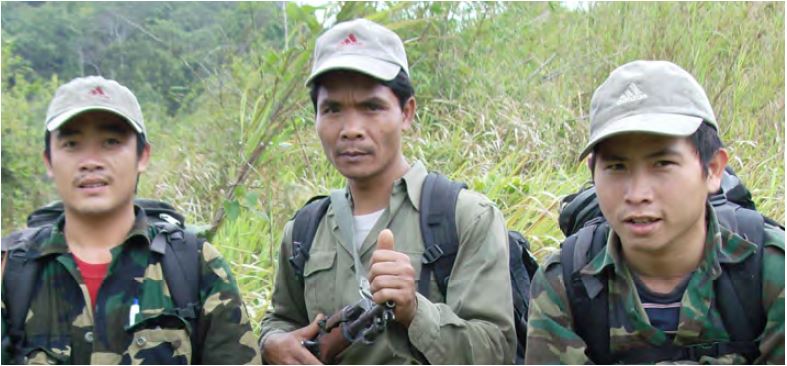Located in one of a very few Asian Tiger source areas, this inspirational tale of adapting actions, strategies, monitoring and even objectives based squarely on evidence by hundreds of people demonstrates the power of the Open Standards.
Wild tigers and their ungulate prey in Lao PDR are threatened by illegal hunting so law enforcement and outreach strategies were rolled out over 10 years to combat population decline.
Monitoring and control methods adapted as results demonstrated levels of success, for instance:
- camera trapping was replaced by opportunistic tiger scat collection and DNA analysis
- armed foot patrols were expanded in numbers and in the areas covered
- the Totally Protected Zone (no hunting) was expanded and
- random road and restaurant checks for tiger and ungulate harvest were abandoned in favor of following up informant reports
This report and journal article summarises ten years dealing with a very difficult project in a developing country and show in great detail how the Open Standards are successfully used for detailed adaptive management.

Armed foot patrol, Lao PDR
Journal article: To protect or neglect? Design, monitoring, and evaluation of a law enforcement strategy to recover small populations of wild tigers and their prey https://doi.org/10.1016/j.biocon.2016.08.018

2 Responses to “Using Systematic Monitoring to Evaluate and Adapt Management of a Tiger Reserve in Northern Lao PDR (Johnson et al, 2012)”
download
This is my first time pay a visit at here and i am truly impressed to read all
at single place.
dsprod
Thank you! This is a very inspiring project.